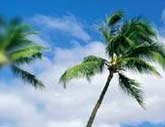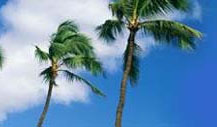| FCE
Data Set ID Number: |
SFWSC_006 |
| Originator(s): |
Jennifer Rehage, Ross Boucek,
(
rehagej@fiu.edu, rbouc003@fiu.edu, )
|
| Title: |
Trophic transfer of Everglades marsh consumer biomass to Everglades Estuaries (FCE), Everglades National Park, South Florida from December 2010 to Present |
| Data
Set metadata: |
View metadata as:
HTML Text
XML
|
| Public
file download: |
None Available until November 2020 |
| Time
Period of Content: |
17-Dec-2010 to 01-Jul-2013 |
| Abstract: |
We measured the trophic transfer of secondary consumer biomass from the Everglades marshes to the oligohaline reaches of the Shark River by sampling the diets of four common large bodied piscivorous fishes occurring at the marsh-estuary oligohaline ecotone. The four species sampled were Florida bass (Micropterus floridanus), bowfin (Amia calva), common snook (Centropomus undecimalis), and red drum (Sciaenops ocellatus). We sampled diets via pulsed gastric lavage, a relatively non-lethal and effective sampling technique used to measure trophic interactions. We quantified trophic transfer of marsh biomass to the estuary when a focal piscivore consumed a prey species that was likely a migrant from adjacent marshes. A more detailed description of these methods can be found in citation #28. In the presented data, we combined estimates of relative abundance of piscivores from standardized electrofishing techniques (# of piscivores/ 100 meters of sampled shoreline) with biomass of marsh species consumed in the estuary to calculate the biomass (g) transferred to the estuary per 100 meters of shoreline. These values serve as our index of how much biomass is being exported off of the marsh to the estuary through consumer mediated habitat linkages. An important key finding from this work is that disturbance, in particular drought, can sever this biomass linkage, and conserve biomass export off of karstic wetlands to estuaries through of marsh secondary consumer trophic pathways. |
| Locations: |
Shark River Estuary, Everglades National Park, FL US |
| Column
description: |
|
COLUMN
|
NAME
|
UNITS
|
TYPE
|
|
1
|
Date |
YYYY-MM-DD |
DateTime |
|
2
|
Latitude_DD |
Decimal Degrees |
Decimal |
|
3
|
Longitude_DD |
Decimal Degrees |
Decimal |
|
4
|
BIOMASS_CONSUMED_PER_100_M |
g |
Decimal |
|
| Number
of records: |
4 Columns by 286 Rows, including Column Header |
| Public
release date: |
18-Nov-2020 |
|

